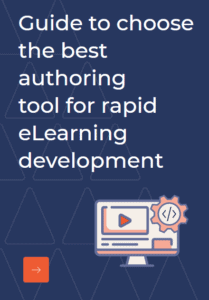There’s a saying that, “people make an organization.” This couldn’t be truer in the context of Manufacturing Companies that function mostly with the help of its frontline employees. While automation is decreasing the intensity of human labor, the importance of human intervention hasn’t decreased. This calls for trained professionals who are up to date with the latest technologies, policies, and processes, and that requires adept training.
If reports are to be believed, “By 2030, demand for skilled workers will outstrip supply, the predicted labor skills shortage is of 7.9 million and unrealized output of $607.14 billion.”
The key reasons for this skill gap and shortage of talent according to 2018 Deloitte skills gap and future of work in manufacturing study are:
- Shifting skill set due to the introduction of new advanced technology and automation
- Negative perception of students/their parents toward the manufacturing industry
- Baby boomer retirements complete the top three causes of today’s skills shortages, according to manufacturing executives.
As Deloitte’s 2018 Global Human Capital Trends report explains, many organizations are working hard to put humans in the loop—rethinking work architecture, retraining people, and rearranging the organization to leverage technology to transform business. Training plays a crucial role in filling the skill gap and where strategies like higher pay fails in employee retention, on-job-training can help manufacturers identify new employees with good attitudes who can adapt to and fit the needs of the job.
With the changing demographics, digital disruption training too has taken a different approach, while eLearning, in general, has surpassed the power of traditional training when it comes to delivering up-to-date training. In the manufacturing industry newer forms of training that harness the power of Mobility, Artificial Intelligence, Augmented Reality and Smart devices has been gaining traction to improve training and to help frontline employees stay in congruence with the organization’s digital transformation and be capable and equipped to drive business results. Here’s a Case Study from the report that points at the same. “A German industrial goods company employs advanced digital technology to enhance the skills and productivity of its employees. Through an AI headset, Microsoft HoloLens, the company provides on-the-job training to its 24,000 service engineers. The technology helps engineers with visual cues on assembling and disassembling the latest company products in a 3D space, and with viewing equipment schematics in the field while being connected with specialists via a Skype call. The technology improved service times by a factor of four. Several other industrial manufacturers also employ similar AR technologies to upskill and provide live assistance to their workers.”
The learners today have limited attention spans. As the case study points out it is up-to-date, modern training approach that strikes a chord with the modern learners, long and monotonous courses, lengthy training session etc. are outdated and fail to keep the learners engaged. Engagement and motivation being the key to the effectiveness of training and in making the employees more skilled. So, what could really work? To understand that, let’s examine the training content that manufacturing companies usually require.
- Occupational Safety and Health Administration Training
- Industrial safety training
- Good Manufacturing Practices
- Manufacturing Processes and Quality Standards
- First Aid Training
- Anti-Harassment Training
Listed above are amongst the more generic topics, product training, industrial training etc. fall under the more specific ones. In general, all the topics are essential for the routine functioning of a manufacturing plant. The smooth functioning of processes can be ensured only when all the employees are on the same page, and this requires regular and reinforced training. This is where learning in small nuggets, iteratively can be of immense help.
Similarly, when there is wide range of training that needs to be provided, rather than delivering it as a bulk, small chunks of information have greater chances of being processed and put to action, more so when the skill levels of employees are not always on the same level. Microlearning can be used to deliver information about complex machinery, operational procedures, do’s and don’ts etc. to produces immediate results.
Still wondering why Microlearning? Here’s why.
- It’s Device agnostic
- It aligns perfectly with the dynamic industry standards
- It is budget-friendly
- Less Time Consuming
- Easy to Update
- And an Effective form of training delivery.
If all these don’t make Microlearning a beacon for Training in Manufacturing Companies, then what does? So, have you explored the benefits of Microlearning yet? If not, it’s time to start rethinking.


